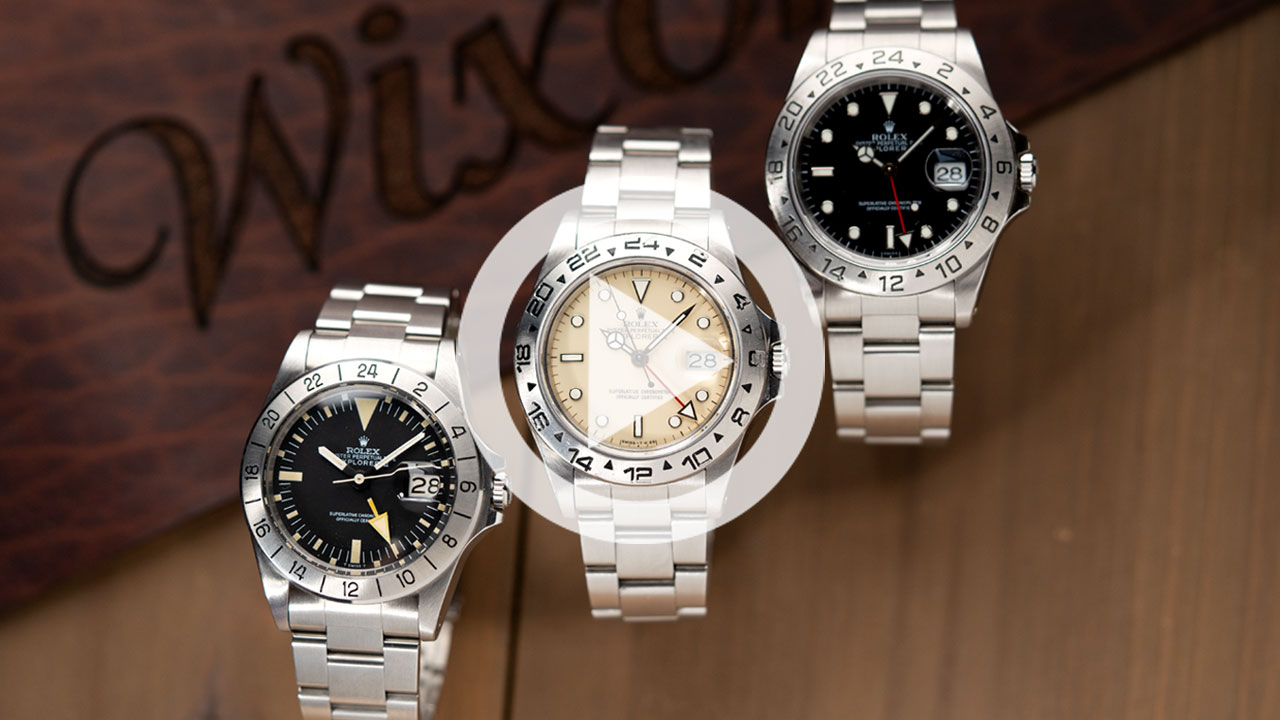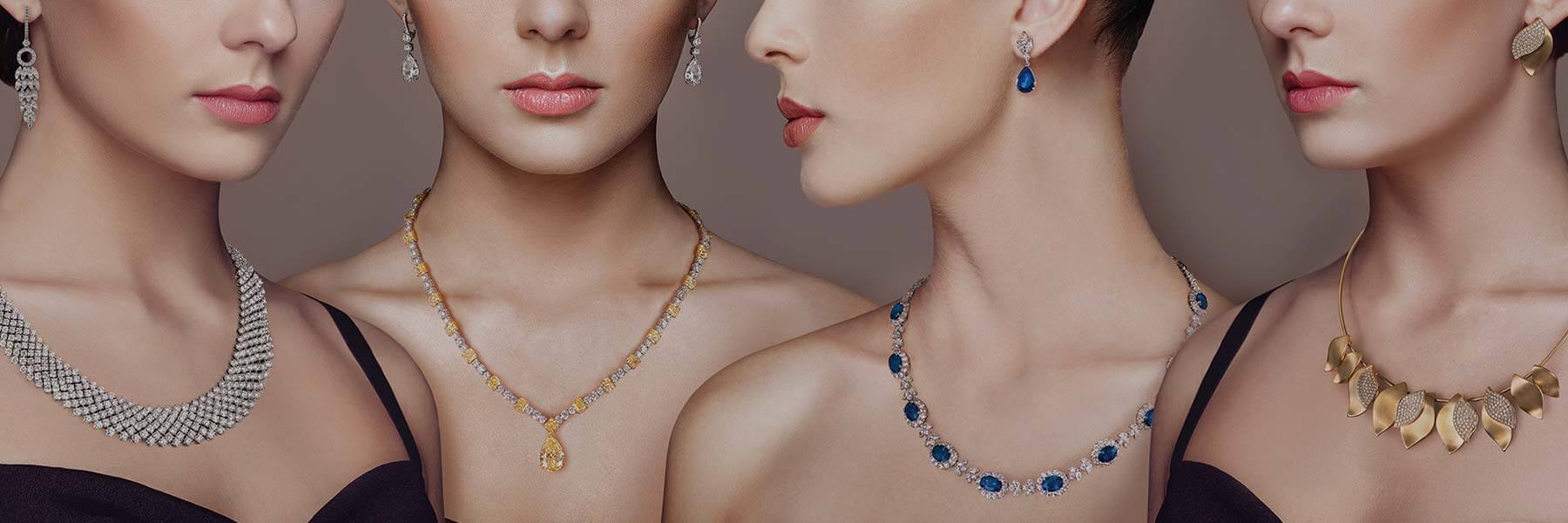VIDEO: Rolex Explorer II Comparison
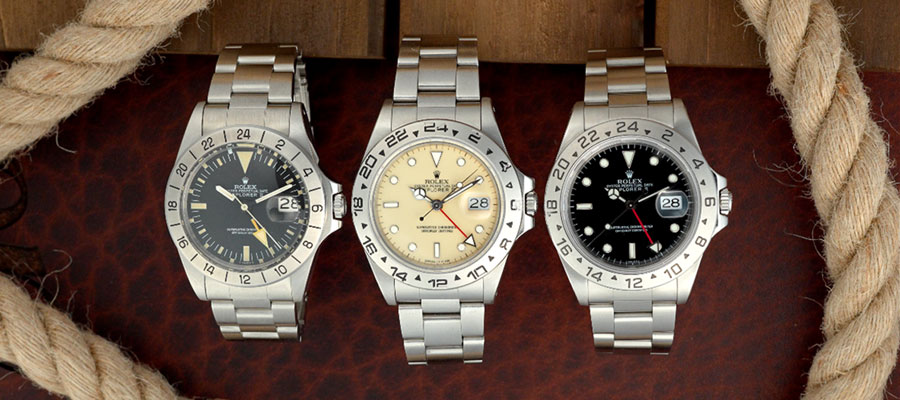
The First 30 Years of Rolex Explorer II: Ref. 1655 vs. 16550 vs. 16570
Dustin discusses three distinct vintage examples of the Explorer II that represent the first three generations of the model—a vintage Ref. 1955 from 1971 alongside a Ref. 16550 from 1986 and a Ref. 16570 from 1999.
1971 Rolex Explorer ll (Ref. 1655)
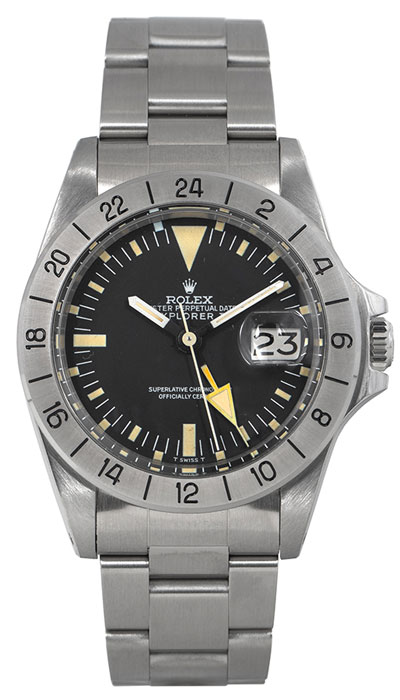 The Explorer II was introduced in 1971 with the Reference 1655. It added to the Explorer line by increasing the case size to 40mm, adding a date function and a 24-hour indicator, which was very useful for its intended audience: scientists and explorers who were in an area that did not have a reliable day night cycle. Places such as above the Arctic Circle or in caves where you don’t have the sun to keep track of what time of day it is. The Reference 1655 features unique dial design with a split outer minute track, large angular markers and hands for easy visibility and low light situations.
The Explorer II was introduced in 1971 with the Reference 1655. It added to the Explorer line by increasing the case size to 40mm, adding a date function and a 24-hour indicator, which was very useful for its intended audience: scientists and explorers who were in an area that did not have a reliable day night cycle. Places such as above the Arctic Circle or in caves where you don’t have the sun to keep track of what time of day it is. The Reference 1655 features unique dial design with a split outer minute track, large angular markers and hands for easy visibility and low light situations.
The Explorer II shared the movement with its contemporary GMT-Master with a fixed 24-hour hand. The 24-hour time is indicated by a large orange arrow shaped hand, which gave the watch its nickname, the “Freccione,” meaning big arrow in Italian.
Given the relatively small target market and unusual design, the Explorer II was not a particularly popular watch when it was first introduced. When compared to some of its stablemates like the GMT-Master or the Submariner, relatively few of these were actually sold, which has now contributed to the desirability and collectability of the model.
See more details on this vintage 1971 Rolex Explorer ll (1655)
1986 Rolex Explorer II “Cream Dial” (16550)
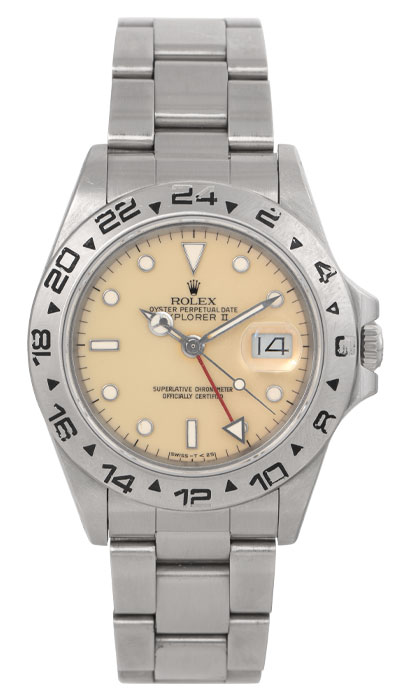 In 1985, Rolex released the next generation of the Explorer II, called the 16550. The Reference 16550 represented a pretty big change in the Explorer II. The movement was upgraded to offer a jumping hour function, allowing the user to track two separate time zones. The crystal was upgraded to a sapphire crystal and a pretty significant aesthetic change was added as well.
In 1985, Rolex released the next generation of the Explorer II, called the 16550. The Reference 16550 represented a pretty big change in the Explorer II. The movement was upgraded to offer a jumping hour function, allowing the user to track two separate time zones. The crystal was upgraded to a sapphire crystal and a pretty significant aesthetic change was added as well.
The matte dial of the 1655 was significantly changed with the 16550. Here we have the additional color of white being an option, with black also being available. The handset was changed to the more traditional Mercedes style with a red accent on the GMT hand as opposed to the large orange arrow. Both of these new dials could sometimes exhibit some unique aging effects. The lacquer finish on the black dials would sometimes crack into a stained glass pattern that collectors call spider dials.
Originally bright white, the dial on this example has aged to a very attractive custard color, which is super desirable for collectors. This watch also shows another detail called a rail dial, where the C in chronometer and certified lineup, creating a gap in the center of the text.
See more details on this pre-owned 1986 Rolex Explorer II “Cream Dial” (16550)
1999 Rolex Explorer II (Ref. 16570)
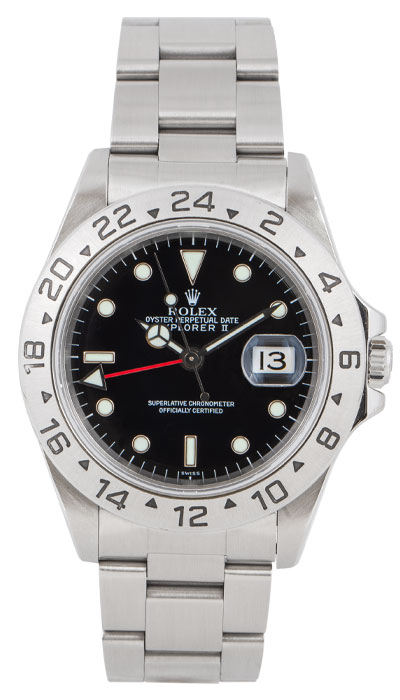
The 16550 is considered a transitional reference only produced for a short time until 1989. That year saw the introduction of the new Reference 16570. Produced for 22 years, the Reference 16570 was a much more popular model for Rolex. There were some changes over the 16550; the white dial now would have black colored surrounds around the Mercedes hands and lume surrounds. There are also some incremental changes over time like upgrades to the bracelet, changes in the lume material, but the basic design of the watch went fundamentally unchanged for the entire production run. Collectors love the clean design, comfortable case and the modern performance and reliability that Rolex can provide.
This specific watch also exhibits what they call a Swiss only dial. The Swiss only dial was only produced for a very short period of time, and it represented a change in the lume material from the previous generation Tritum to the more modern Luminova. The previous two generations of the Explorer II use Tritum as alum material. Tritum was used for a very long time, but it was slightly radioactive and would eventually fail, leading Rolex to push into luminova as a more advanced material.
While it may not be worn exclusively by Arctic and cave explorers, the Rolex Explorer II has cemented its place in the lineup as shown by its over 50 years of continuous production. The model has exhibited many aesthetic changes over the years, representing a unique opportunity for a collector to focus on a particular model, or even collect several versions of the same watch.
See more details on this pre-owned 1999 Rolex Explorer II (16570)



